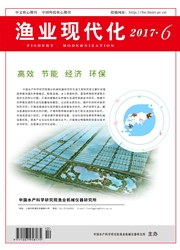

 中文摘要:
中文摘要:
音响驯化作为一种重要的鱼类行为控制技术在海洋声牧场中的地位越来越重要。本文研究其有效作用范围的主要影响因素:海洋环境噪声级、水声传播损失、鱼类的听觉特性、水下换能器的声源级。通过建立水声信号系统,由水听器、声级计、信号记录仪、信号处理软件组成,着重对海洋环境噪声进行了测量。结果表明,大连黑石礁湾海洋环境噪声级为93—118dB,水下传播损失为30lgr,以许氏平蚰(Sebastesschlegeli)、黄盖(Limandaaspera)为驯化鱼种,单个驯化点的有效作用范围分别约为52.2m、44.5in。
 英文摘要:
英文摘要:
As an important control technology of fish behavior, the acoustics conditioning' s position in fishery has become increasingly important. This article focuses on the main influencing factors that affect the effective range of the acoustic conditioning: the noise level in marine environment, the sound transmission loss, the auditory characteristics of fish, and the source level of underwater acoustic transducer. The acoustic signal processing systems is established, which include hydrophone, sound level meter, signal recorder, software Flexpro. And the noise in marine environment and the sound transmission loss is measured. Results showed that the noise of the Heishijiao Bay in Dalian is 93-118 dB. The underwater transmission loss is 30 lgr. Finally, if selected Sebastes schlegeli or Limanda aspera, the range of single domestication point is 52.2 m or 44.5 m. Also some application problems are discussed.
 同期刊论文项目
同期刊论文项目
 同项目期刊论文
同项目期刊论文
 期刊信息
期刊信息
